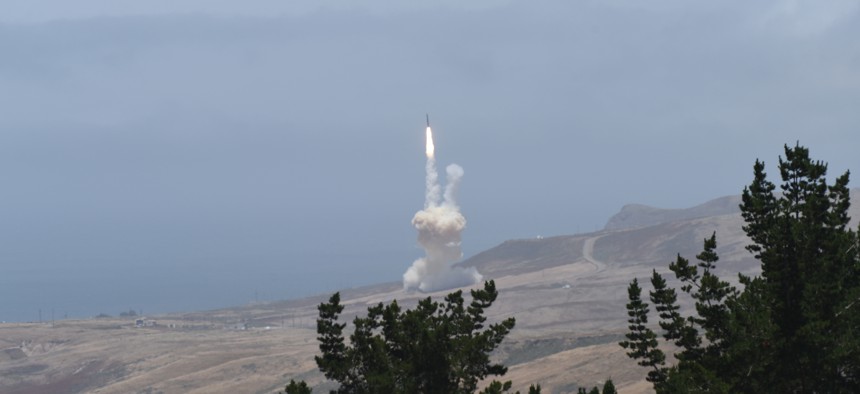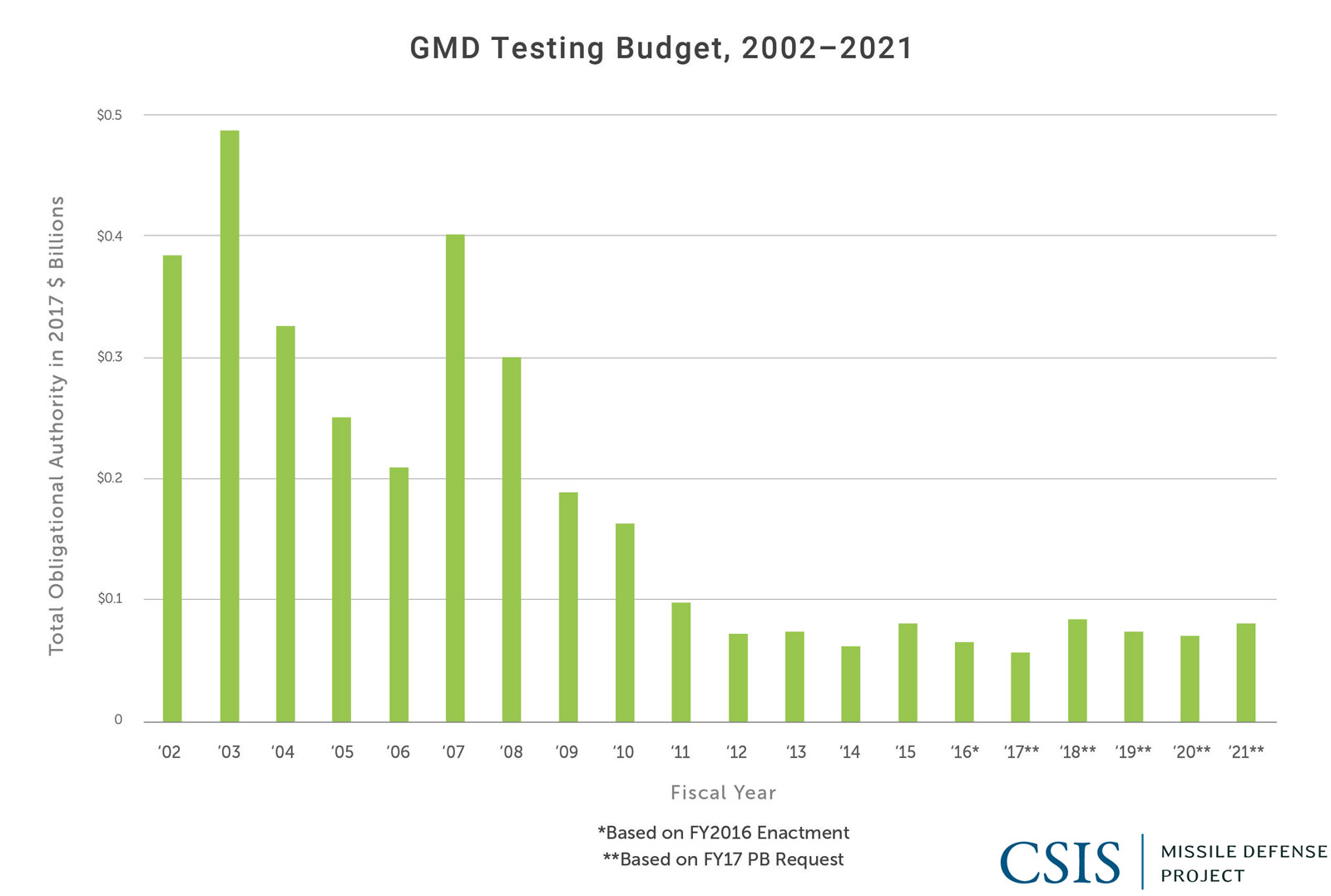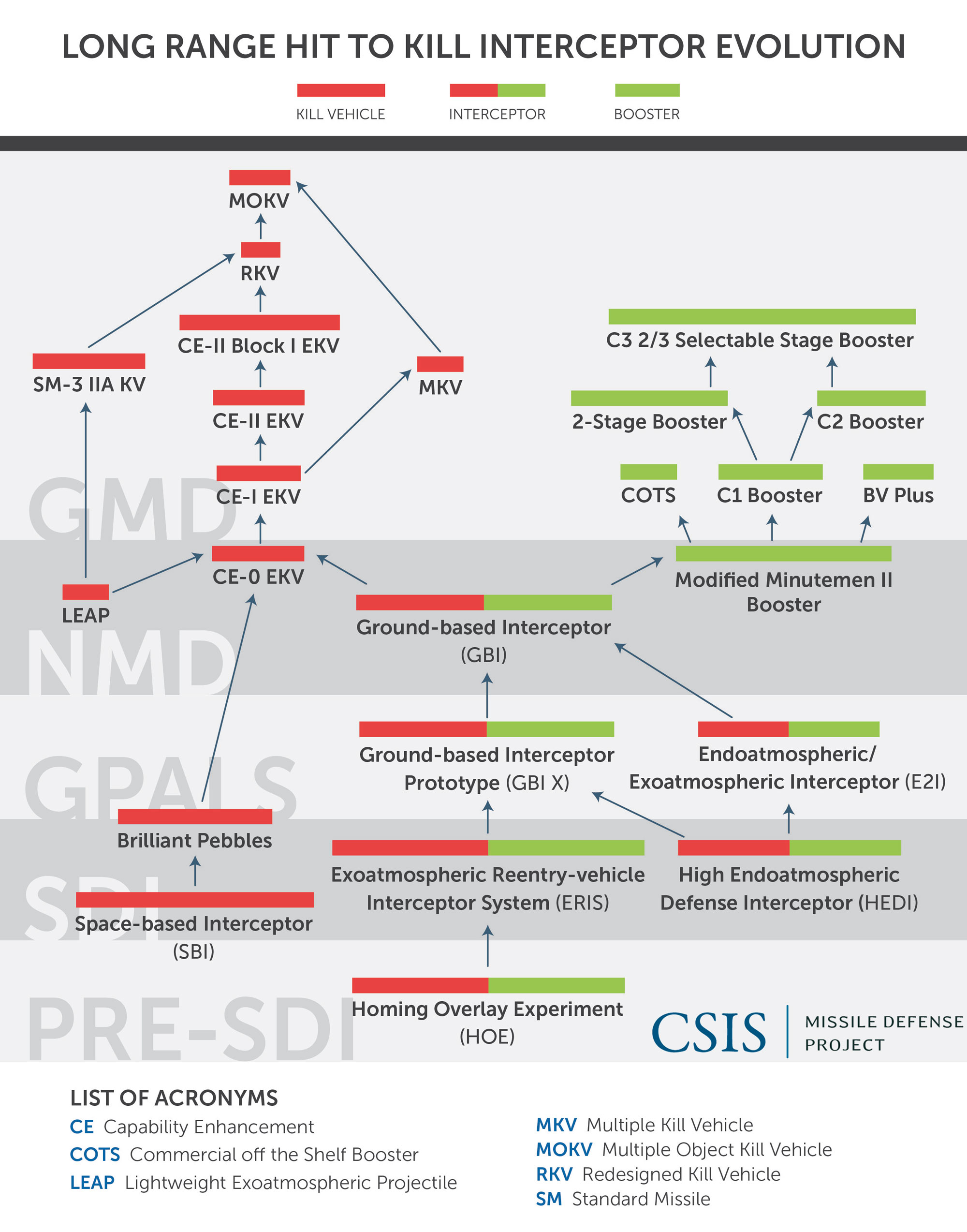
The U.S. Missile Defense Agency conducts an intercept test of an intercontinental ballistic missile at Vandenberg Air Force Base, Calif., May 30, 2017. Photo by Leah Garton
How to Keep US Missile Defense on the Right Track
Use the coming funding boost to smooth the development of a new kill vehicle and increase GMD testing in general.
Recent budget moves will give the U.S. missile defense effort a major boost in funding over the coming year, likely allowing the purchase of additional Ground Based Interceptor missiles on top of the 44 already deployed for use by the Ground-based Midcourse Defense system against ICBMs headed toward the U.S. homeland. The funding boost should also be used to smooth the development of a new interceptor warhead and increase testing of the GMD system in general.
A GBI’s warhead — more precisely called a kill vehicle — is an intricate piece of equipment designed to hunt down and physically collide with an enemy missile in the vacuum of space. The ones currently deployed are called Exoatmospheric Kill Vehicles, or EKVs. They are produced by hand, one-by-one, in a process that involves more than 130,000 steps.
The EKVs have undergone several fixes and enhancements over the years. A somewhat staggered and uneven process, these incremental improvements have resulted in a mixed GBI fleet that employs three EKV variants — CE-1, CE-2, and CE-2 Block 1 — each with differing levels of reliability and capability. The GBI intercept test record has been mixed, with GBIs successfully intercepting ballistic targets in 10 out of 18 attempts since 1998. The test record of GBIs in the three configurations that are currently deployed is better: six intercepts in seven attempts. (To be specific: four successful intercepts in five tests for the CE-1, one in one for the reconfigured CE-2 with IMU firmware upgrades, and one in one for CE-2 Block 1.)
Within a decade, however, the EKV is to be replaced by the Redesigned Kill Vehicle, or RKV. This program seeks to take what we have learned from the past 20 years of hit-to-kill missile defense development and simplify the GBI kill vehicle design, making it more easily producible, cheaper, and more reliable. A more reliable kill vehicle means that the system will be able to fire fewer interceptors at an incoming missile to ensure its destruction. The RKV will likely commence flight-testing in 2019, with an intercept test in 2020. If these tests are satisfactory, initial deployments of the RKV could begin in late 2021 or perhaps 2022. The goal would be to replace almost the entire GBI fleet with RKVs in 2024 or 2025. The final result will be a nearly uniform GBI fleet, which would simplify engagement planning and long-term operations and maintenance.

Some have argued that the Missile Defense Agency’s schedule for RKV is too aggressive, saying the timeline will create additional risk and lead to the kind of uncertainties in reliability that have affected GMD in the past. This caution is not without foundation. The first operational deployments of GMD in 2004 came less than two years after President George W. Bush’s initial decision to deploy missile defenses for the U.S. homeland. Missile defense proponents and critics alike must acknowledge that this rapid, politically mandated turnaround time contributed to EKV reliability issues later on. RKV reliability is too important to rush.
Yet there are differences between then and now that make this an imperfect comparison. For one, the body of knowledge about hit-to-kill missile defense technology is today vastly greater than in the early 2000s. A Dec. 24 L.A. Times article , for instance, describes RKV as a “prototype” kill vehicle. This is a somewhat misleading characterization. Whereas the EKV was initially fielded as a sort of advanced prototype, the RKV will share many components with the most recent CE-II Block 1 variant, which the Missile Defense Agency successfully tested in 2017. RKV will also incorporate elements of other proven systems, such as the U.S. Navy’s Standard Missile-3 and the Terminal High Altitude Area Defense, or THAAD, both of which have undergone significant successful testing . The RKV might be better viewed as a much awaited, much-overdue design turn to refine the EKV prototype into a more streamlined and producible system.
The RKV effort is indeed long overdue. Yet an EKV redesign has lagged because of GMD’s rushed initial deployment and uneven political and budgetary prioritization. An EKV redesign effort has also suffered against the competing need to fix reliability issues in the deployed GBIs uncovered during post-deployment testing. Other missile defense interceptors, such as Aegis BMD , benefited greatly from kill vehicle redesigns. The Lightweight Exoatmospheric Projectile , or LEAP, prototype, for example, underwent a major redesign to create the kill vehicles aboard today’s Aegis SM-3 interceptors. GMD, by contrast, has not been afforded this opportunity until now.

The L.A. Times piece also highlighted that the Missile Defense Agency currently plans only one intercept test of RKV before deploying them. This appears quite a minimal testing regime, but one must not ignore the non-intercept flight-testing and ground-testing that RKV will undergo as well. Such tests, although they lack the same level of media attention, will provide significant information about the functioning of the RKV design. And to be sure, the Missile Defense Agency will not deploy the RKV if it fails to meet its test objectives.
The United States, nevertheless, does need to test its homeland missile defense system more often. The more data points we have, the better we can assess confidence in the system. During the Bush Administration, a GMD test was conducted about twice a year. Since 2010, the testing cadence has declined to about once every two or three years. With the North Korean ICBM threat materializing at its current pace, a return to at least annual testing would be prudent. Not only would this improve confidence in the system, but would send Kim Jong Un a powerful signal that the United States will not allow itself to succumb to nuclear blackmail.
NEXT STORY: Heroes Can Keep Secrets, Too



